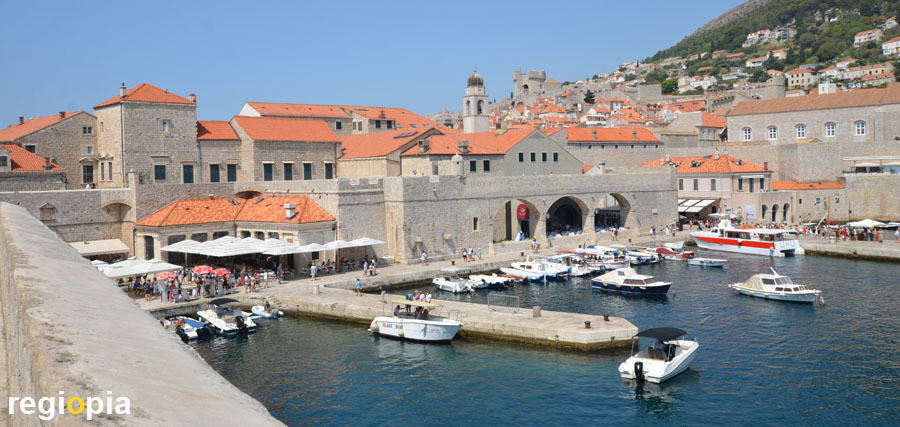
Dubrovnik Old Harbor
Dubrovnik owes its rise to its port. For a long time the city acted as a transshipment point for goods that were transported from Asia to Europe and vice versa. The old port of Stara Luka was the heart of Dubrovnik and was protected by powerful fortresses and a heavy iron chain. The Valobran Kase breakwater protects the harbor from strong winds and high waves.
Today the old harbor is home to the piers for excursion boats to Lokrum Island and other nearby destinations. In the former shipyards and warehouses there are now elegant restaurants. A fish market takes place on the square in the morning. M
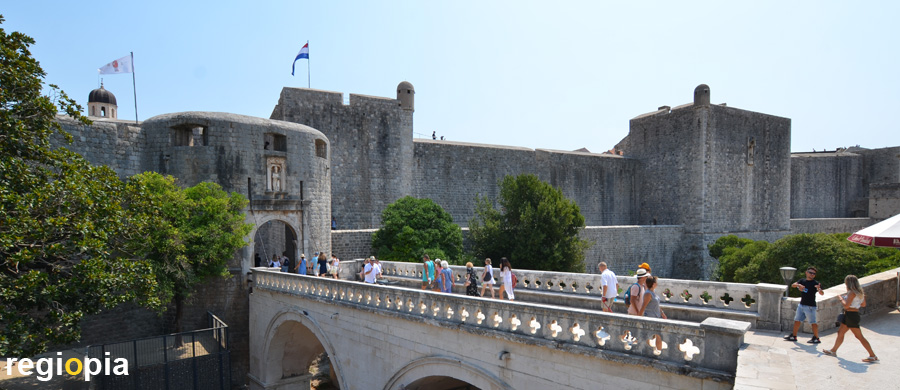
Pile-Gate
For most tourists, the Pile Gate is the gateway to Dubrovnik's old town. The city gate is located in the west of the historic city. In front of the gate is the moat, over which a stone bridge leads. The last part of the bridge consists of a wooden drawbridge that could be pulled up in the event of threats. Saint Blaise (Sv. Vlaho) as the city's patron saint watches over the Pile Gate. The outer gate was built in 1527, the gate behind it was built in 1460. In between there is a kennel enclosed by high walls, in which the crowds of visitors today accumulate. Behind the Pile gate Vrata od Pila begins the district of Pile. M
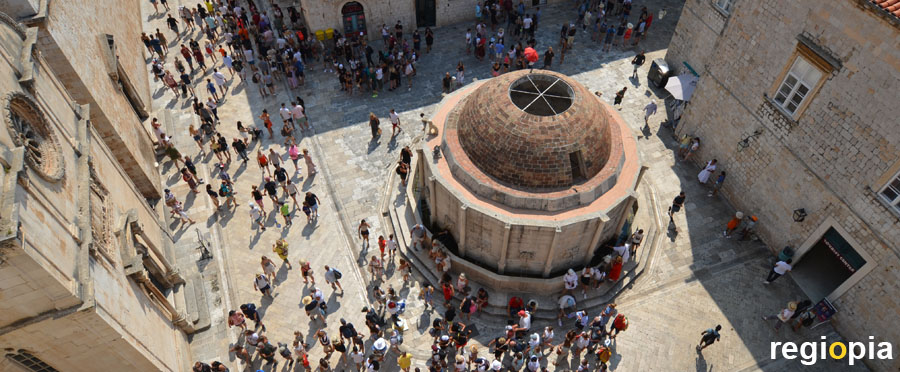
Great Onofrio Fountain
When you enter the old town through the Pile Gate, you stand in front of the Great Onofrio Fountain Velika Onofrijeva fontana. The fountain is named after its builder, the Italian architect Onofrio della Cava. The "Great Onofrio Fountain" was opened in 1438. The sixteen-sided fountain was a central part of the medieval water supply of Dubrovnik. The "Great Onofrio Fountain" is connected by a water pipe to the "Small Onofrio Fountain" at the other end of the main street, Placa. Both fountains used to be richly decorated. Due to the earthquake of 1667 and war damage, most of the stone carving was lost, but some gargoyles still adorn the large fountain today. M
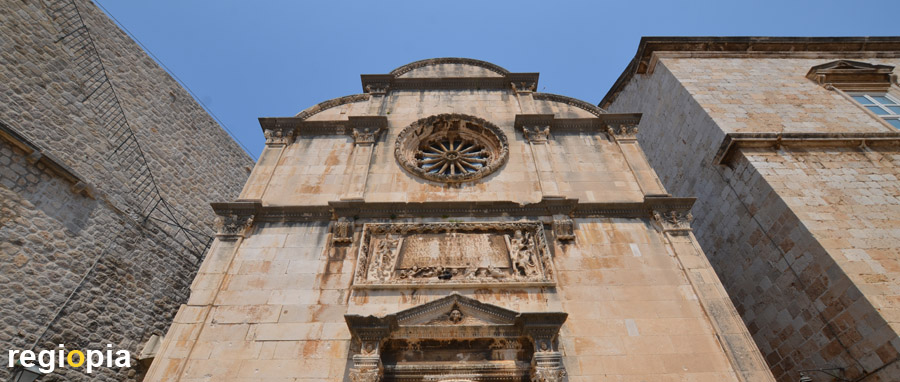
Chapel of Sv. Spas and Franciscan monastery
At the Great Onofria Fountain there is a small church with a beautiful natural stone facade. The chapel of Sv. Spas (St. Salvator) was built in 1520. You can look into the interior through the locked door. Right next door is the Franciscan monastery with a beautiful late Romanesque cloister with double columns. The actual church was destroyed in the earthquake of 1667 and was rebuilt in a very simplified way, only a few details of the original church were used. Another highlight of the monastery is the museum with a historic pharmacy that has existed since 1317. M
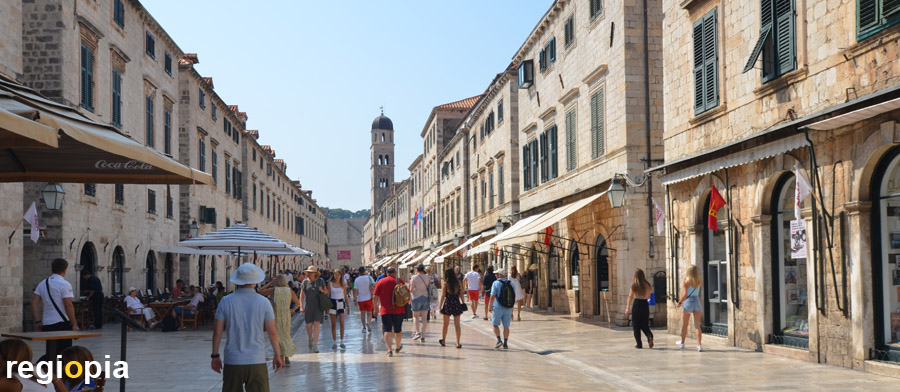
Stradun
The main street of Dubrovnik runs from the Pile Gate to the port. The Stradun or Placa used to be an arm of the sea that separated the island of Ragusa from the settlement of Dubrava. Ragusa was founded by Greco-Roman settlers who had fled Epidaurum (Cavtat). Dubrava was a Slavic settlement on the mainland. Both settlements were only separated by this narrow band of water. In the 11th century, the two settlements decided to unite and fill in the inlet. This created a wide street that was paved with marble slabs. The name Stradun is derived from Strada, Placa indicates a place. The street is as wide as a square and is used that way, there are numerous restaurants with outdoor catering. In the evening, the sun is reflected on the floor covering, which has been smoothly run by millions of tourists. M
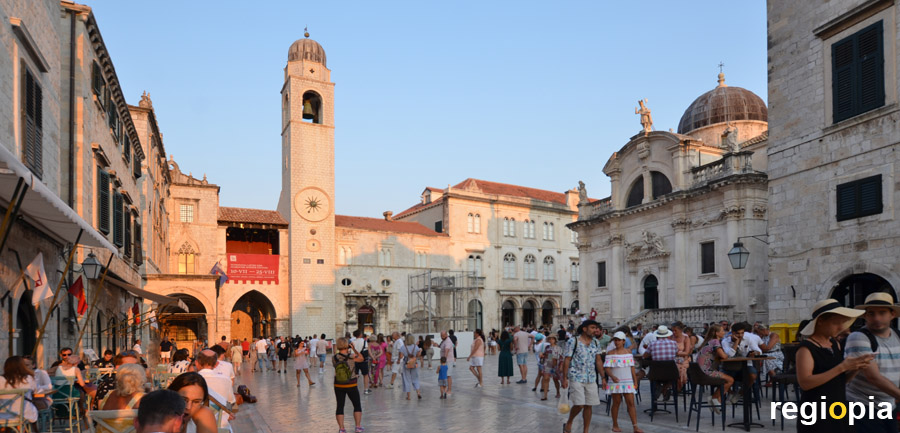
Luza
Luza used to be the market square of Dubrovnik, today you can find many famous sights here. The square is at the eastern end of the main street Stradun, which opens up to a square here. The square is dominated by the 31 m high Zvonik bell tower. The clock tower was originally built in 1444. However, the current structure is a reconstruction from 1929.
There is a flagpole in the square with a sculpture of Roland on the base. This Roland column Orlandov stup was erected in 1418 because the knight Roland is said to have defeated the Saracens in Spain with his sword Durendal. The dealers used the length of his forearm as a Ragusaner cubit.
In a niche in the main guard building is the Little Onofrio fountain with beautiful decorations and fish motifs. Opposite is the church of St. Blaise Sv. Vlaho. The baroque church was built in 1715 and is dedicated to the city patron who saved Dubrovnik from the Venetians by warning the city of a night attack. On February 3rd, the procession for the patron saint of Dubrovnik begins here. M
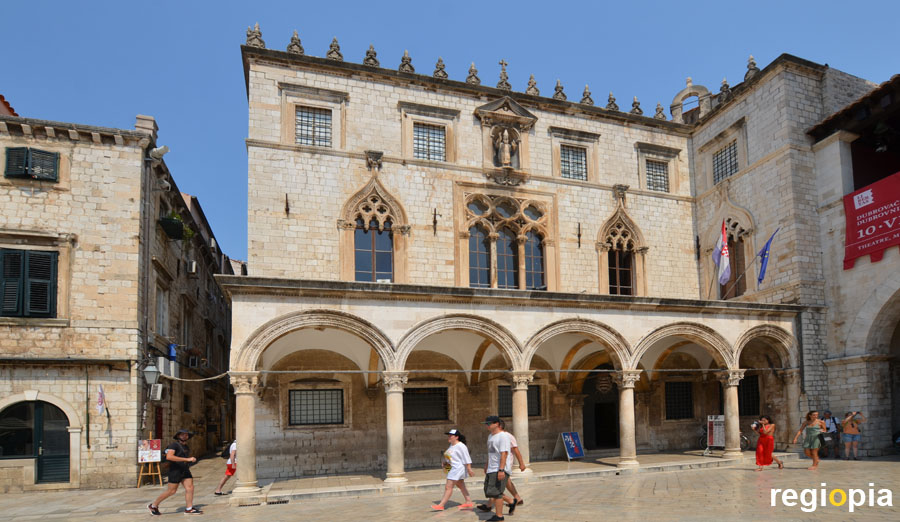
Sponza Palace
The Sponza Palace (Palaca Sponza) is one of the few buildings that survived the 1667 earthquake. It was built as a customs house in the Gothic style. On the first floor you can see the Byzantine-inspired window details as you can also find them in Venice. The second floor was added later and shows the comparatively sober elegance of the Renaissance with rectangular window formats. At that time the building was also used as a treasury and bank. Today the city archive and exhibition rooms are located here. The inner courtyard with arcades and round arches is very worth seeing. M
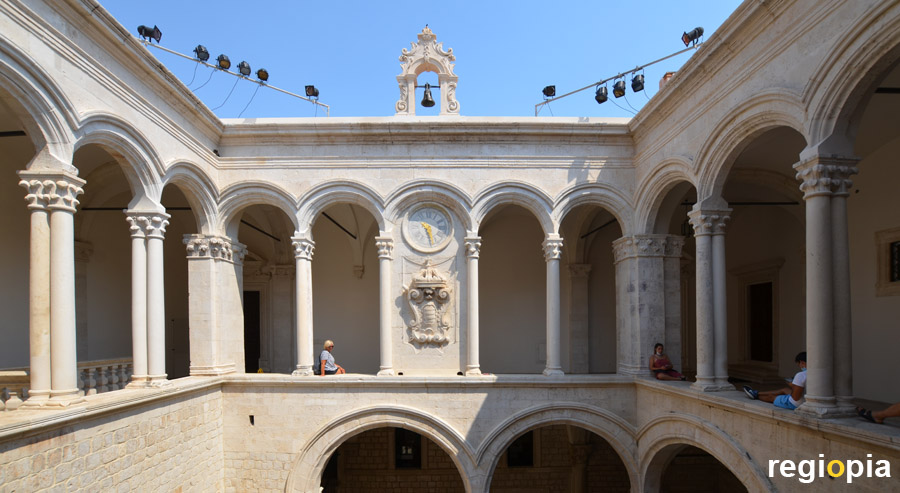
Rector's Palace
The Rector's Palace was the official seat and residence of the mayor of Dubrovnik or the Republic of Ragusa (1358-1808), as the city-state was then called. The palace reflected the power and wealth of the proud port city. In the past, the Rector's Palace (Knezev dvor) was more like a fortress in which gunpowder was also stored. This was the doom of the palace and the rector, so that a new palace had to be built in 1335. For this, the architect Onofrio della Cava was hired, who also had the wells named after him built.
The Rector's Palace was built in the Gothic style and has an arcade hall with 6 arches on the city side. The representative entrance to the palace is located here. On the floor above you can see a row of 8 pointed arched windows. When you enter the Rector's Palace you stand in the magnificent inner courtyard with a baroque staircase. Note the wooden handrail that is held by hands. In the splendid interiors, historical furniture, sedan chairs and pictures are exhibited, as well as the two bell figures of the clock tower.
The building was destroyed several times by powder explosions and earthquakes, but was repeatedly rebuilt according to the old plans. The Rector's Palace is one of the top Dubrovnik attractions that should not be missed. M
ads
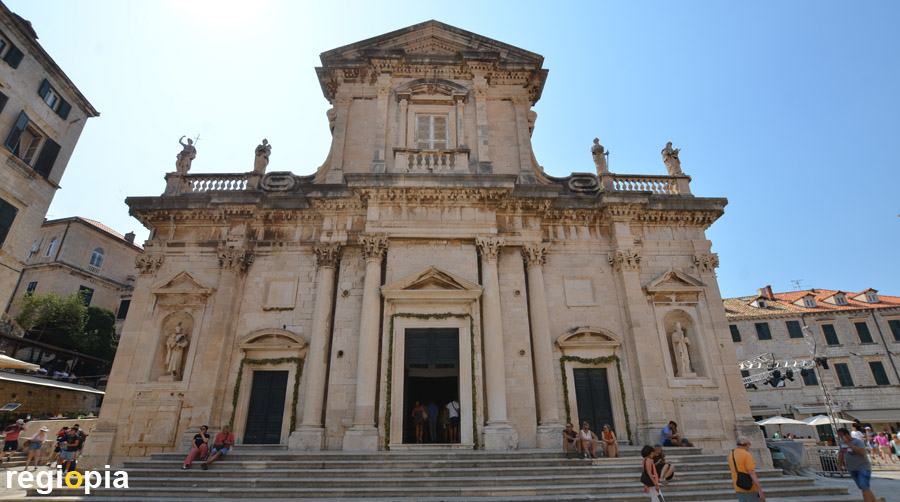
Dubrovnik Cathedral
The Dubrovnik Cathedral stands next to the Rector's Palace. The baroque building was built between 1672 and 1713 after the previous Romanesque building was destroyed by the earthquake of 1667. According to legend, this first church was donated by Richard the Lionheart, who was stranded on Lokrum Island in 1192.
The Cathedral of the Assumption of the Virgin Mary is a three-aisled basilica with a crossing dome, which was built according to the plans of Andrea Buffalini. Sights include the church treasure with relics of St. Blaise and the winged altar, which comes from Titian's workshop. M
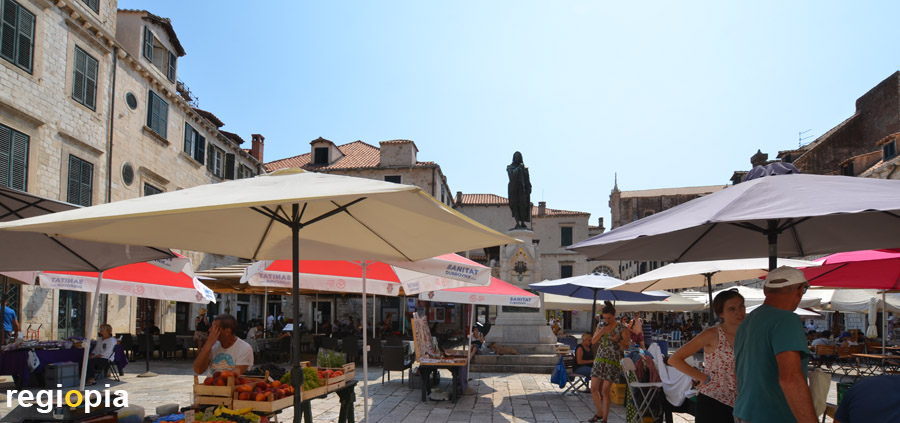
Gunduliceva Square
On the Gunduliceva Poljana square there is a small market in the morning where you can buy regional products such as fruit and vegetables. When the market stalls pack up, the restaurants spread out again on the square. In the middle of the square is a statue of the poet Ivan Gundulic (1589-1638), which was designed by Ivan Rendic in 1892. Who does not like pigeons should avoid the place at 12 o'clock, then the birds are fed here. M
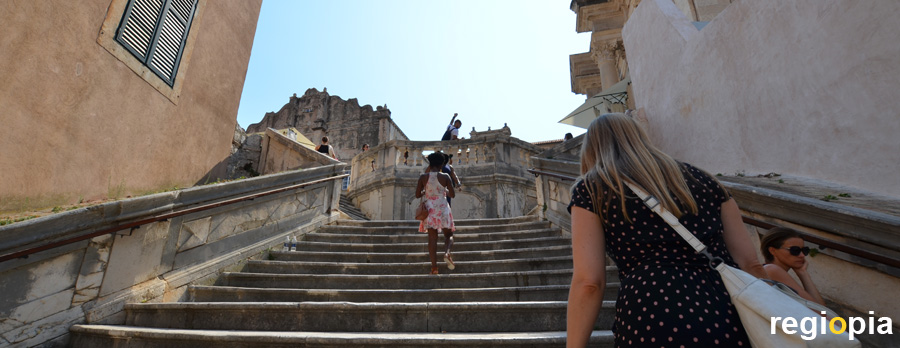
Dubrovnik Game of Thrones sites
The TV series Game of Thrones was partly shot in Dubrovnik. There are many places in the city that GoT fans visit. There are Game of Thrones tours and merchandising products on every corner. So you shouldn't be surprised at people who happily pose in apparently unspectacular places. One of the most famous places is the baroque staircase that leads from Gunduliceva Square to the Church of St. Ignatius. The Jesuit stairs were the scene where Queen Cersei runs naked down the stairs as a penance. You shouldn't be surprised if some tourists suggest the "walk of shame" on the stairs. The fantasy series ran from 2011 to 2019.
If you are not interested in Game of Thrones, the beautiful staircase was designed by Pietro Passalacqua in 1738. The Roman architect took the Spanish Steps as a model in his hometown. M
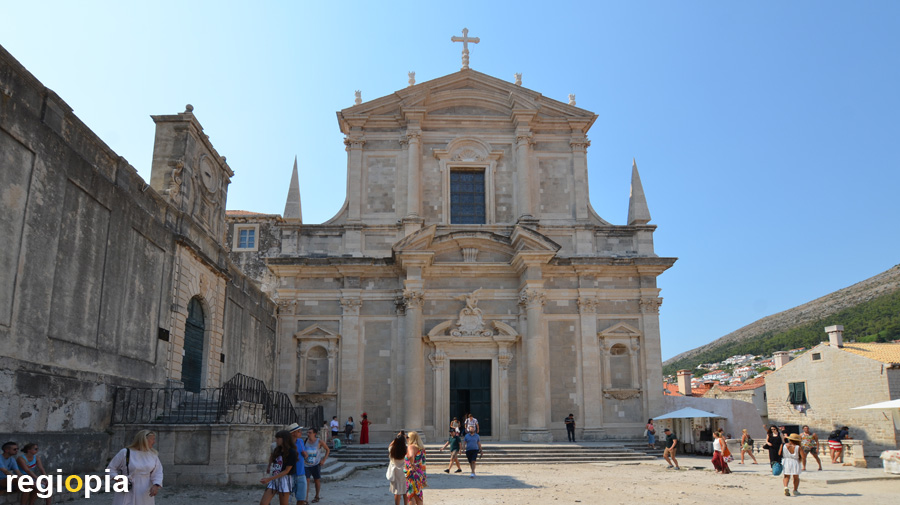
St. Ignatius
St. Ignatius is another church in the Roman Baroque style. The building was designed by the Italian architect Andrea Pozzo, who himself belonged to the Jesuit order. Although Pozzo is known for its perspective dome frescoes, the frescoes in this church were painted by Gaetano Garcia since Pozzo died in 1709. The church was built between 1703 and 1725, the frescoes were not added until 1735.
The Jesuit monastery also had a school, which later became the University of Dubrovnik. M
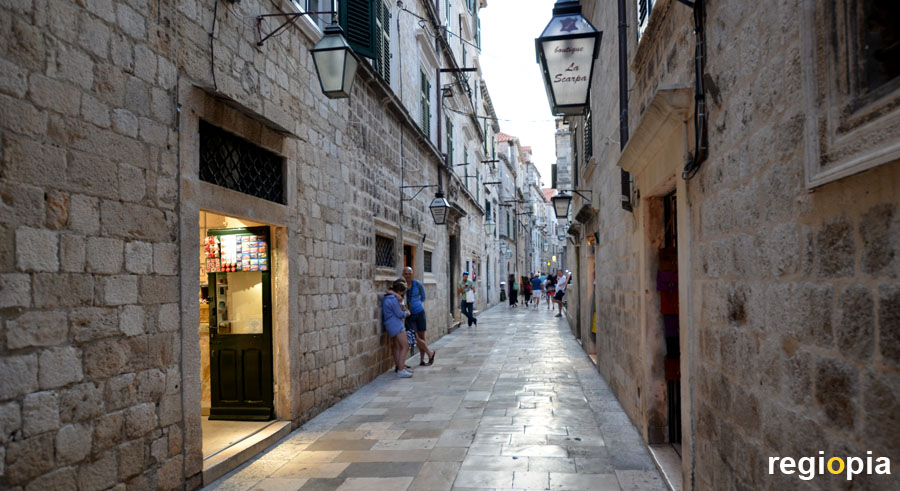
Puca Street
There are countless little streets in Dubrovnik. Despite its narrow width, Puca Street is one of the larger streets in the old town. It runs parallel to the Stradun in an east-west direction. The Puca starts at Gunduliceva Square and leads to the Great Onofrio Fountain at the Pile Gate. There are many small shops in the alley that invite you to browse. In the side streets you can still find restaurants that are not completely overcrowded. m
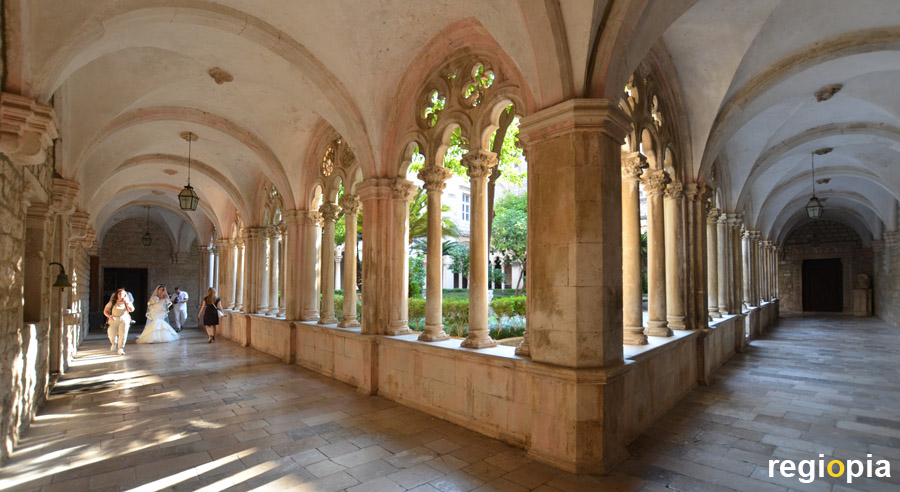
Dominican monastery
The Dominican monastery is located in the northwest corner of the old town, just behind the harbor and the city wall. When you come from the port a staircase leads to the entrance of the monastery. This staircase has a special feature because the open gap between the balusters is half closed to prevent people from looking down at the skirt.
The Dominican monastery was founded in 1225, but the buildings were not completed until the 16th century. The main attraction of the monastery is the beautiful cloister with a fountain and garden. The church was built in the Gothic style, but the interior was later redesigned in Baroque style. M
ads
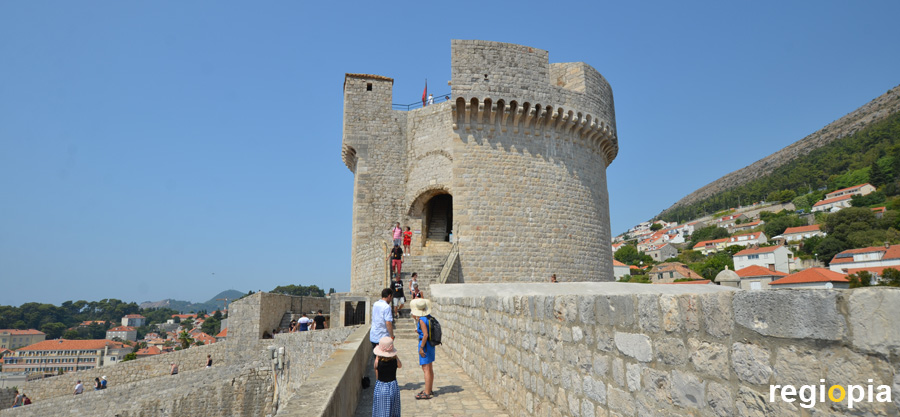
Dubrovnik city wall
The city wall completely encloses the old town of Dubrovnik. You can walk around the historic center on the wall and look into the alleys. There are 3 entrances to the city wall. One entrance is at the Pile Gate, one at the harbor at the fortress of Sv. Ivan and the third is at the Ploce Gate. The path on the city wall is sometimes narrow, so you can only go around the wall in an anti-clockwise direction. There is hardly any shade on the city wall, in summer it can get very hot and you walk up and down a lot of stairs. At the large bastions in the south of the wall there are cafes with cold drinks and small snacks. Admission is relatively expensive at around € 30 (price from 2021) but the breathtaking view of the sea and the historical buildings are a highlight of Dubrovnik. M
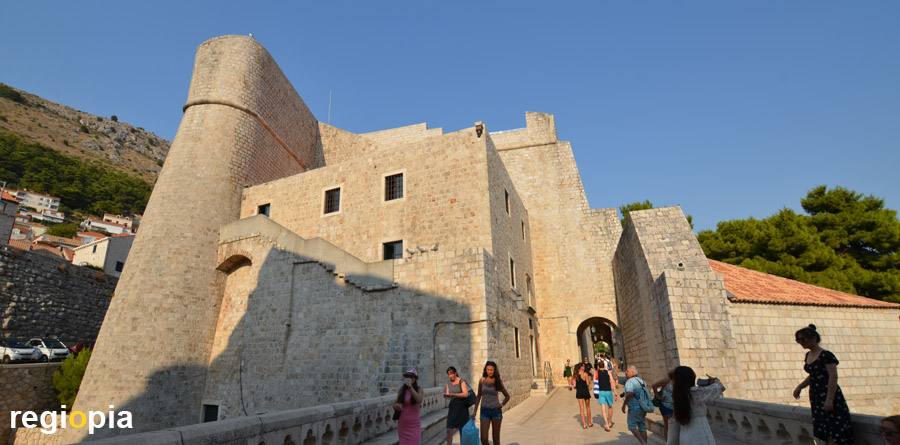
Ploce Gate
The Ploce Gate is the city entrance in the east of the old town. The facility is similar to the Pile Gate on the other side of the city. A bridge crosses the moat, with a wooden drawbridge in front of the Revelin fortress. The fortress is a fortress in front of the actual city gate, which was built in 1462 when the Ottoman Empire invaded the Balkans. From here you have the best view of the port of Dubrovnik. Another bridge then leads into the old town. Despite its massive walls, the fortress looks very elegant due to its rounded shape. M
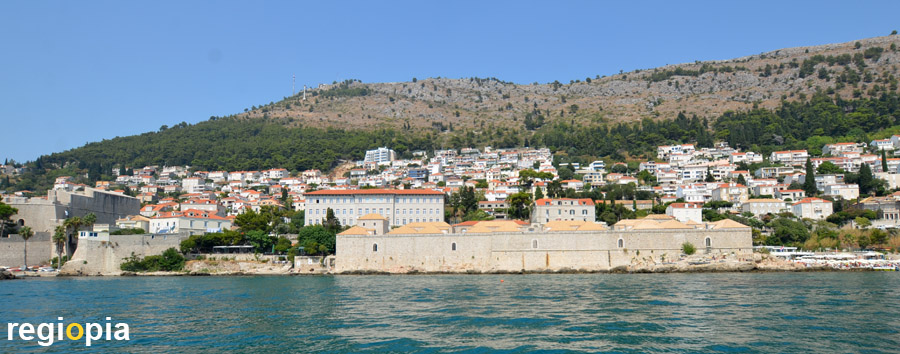
Lazareti
Lazareti is a former quarantine station located between the Ploce Gate and Plaza Banje Beach. As early as 1377, the Republic of Ragusa made quarantine mandatory for travelers. First it was 30 days, then 40 days (quaranta) that had to be spent on an offshore island. In 1642 the walled station Lazareti was completed. The traders from the Orient spent their quarantine in the 10 stone houses until they were allowed to enter the city of Dubrovnik. Lazareti was the model for similar quarantine stations in Venice and other port cities in Europe.
Today the well-preserved buildings serve as an art gallery, party location and are home to various cultural establishments. M
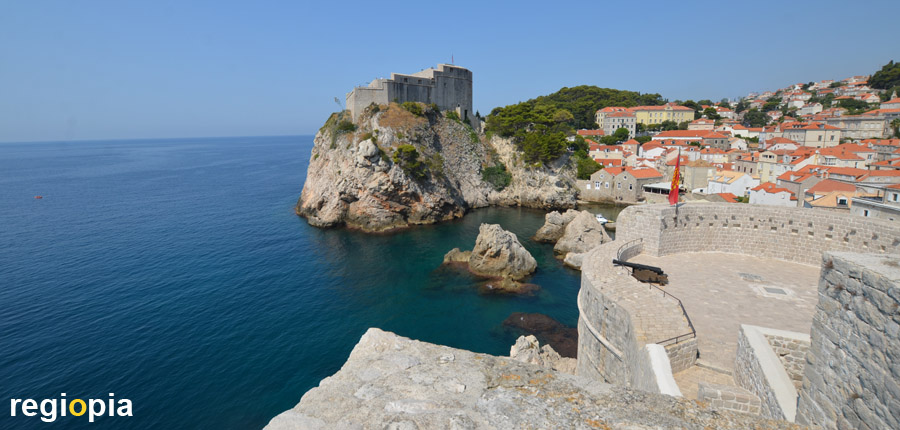
Lovrijenac fortress
The Lovrijenac fortress was built on a 37 m high cliff between two small bays. It was built in the 15th century to protect the Pile Gate and to prevent attackers from using the rock to bombard Dubrovnik. In the picturesque bay between the city wall and the Lovrijenac fortress, the colorful kayaks land today, with which one can circumnavigate the old town by sea. From the fortress you have a beautiful view of the old town of Dubrovnik. M
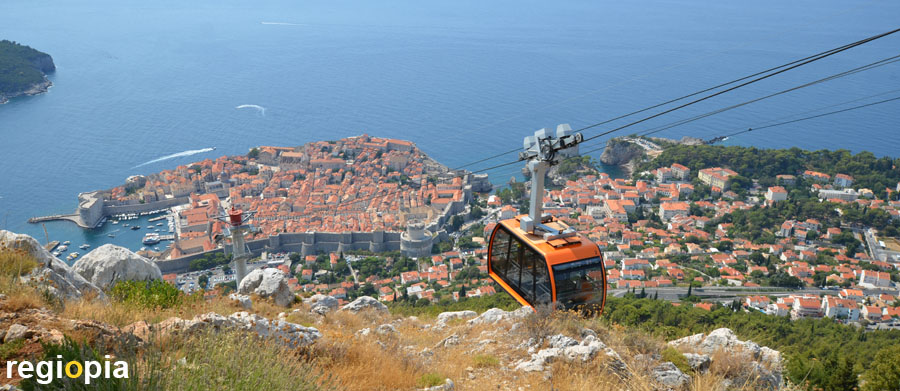
Mount Srd
The 412 m high mountain Srd rises above the old town of Dubrovnik. If you walk from the old town through the city gate Vrata od Buze, after a few minutes you come to the valley station of the cable car that goes to the top. The journey is not cheap but the steep ascent is only something for hikers who are capable of suffering in midsummer, and the Mount Srd Hiking Trail on Jadranska cesta is not easy to find.
The cable car takes you to the top in a few minutes. The mountain station offers a breathtaking panorama of the old town and the enchanting Croatian coast. You can see the island of Lokrum in the south and the island of Kolocep in the west of the city. If you look in the other direction, you can see the dry mountains of Bosnia and Herzegovina on the horizon. The border to the neighboring country is only around 4 kilometers away.
There is a fortress on Mount Srd which now houses a museum. The museum is dedicated to the Croatian soldiers who heroically defended Dubrovnik during the Yugoslav War of 1991 against the attacks of the Yugoslav People's Army (Serbia) and thus fought for Croatia's independence.
There is an excellent panoramic restaurant on the summit. If you want to eat here in the evening, you have to reserve well in advance. During the day, with a little luck and a certain waiting time, you can still get a table.
You can find current prices and further information on the Dubrovnik Cable Car website (see link). M
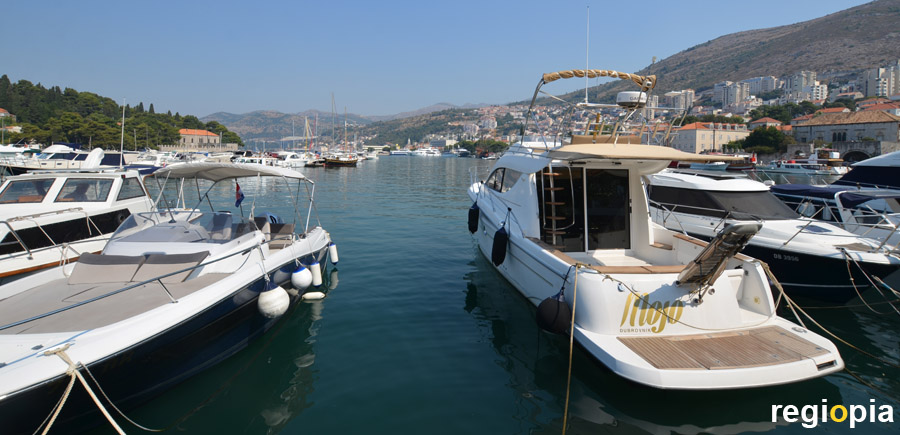
Gruz
The large cruise ships that flood Dubrovnik with tourists dock in the port of Gruz. The port is located in a sheltered bay northwest of the old town. The ferries to Kolocep, Lopud, Sipan and other islands along the coast also start from here. Tourist boats offer tours and day trips. In addition to the many boats, the Ribarnica Gruz fish market is another attraction of the port. M
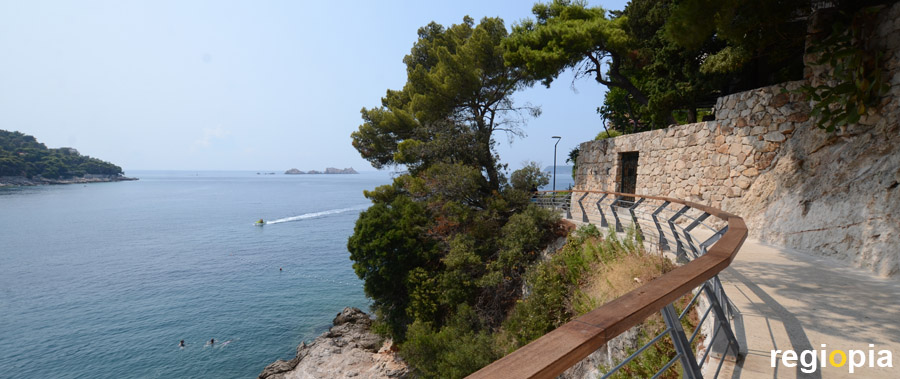
Setnica Walking Trail
The most beautiful thing about Croatia is the magical coastline. In Dubrovnik, too, you can walk by the sea and admire the clear blue water. The scent of pine trees and the chirping of cicadas beguile the senses. The Setnica Walking Trail begins at Lapad Beach on the Šetalište Nika i Meda Pucića waterfront and leads around the peninsula to the port of Gruz. On the way you can see small bays, the island of Kolocep, luxury hotels with exclusive restaurants and beach clubs. The whole loop back to the beach is about 5 kilometers long, but the path is not signposted everywhere but you can just follow the coast. If you want you can spend a whole day here. M
Dubrovnik tourist map
ads
Travel Guide Dubrovnik
ads
ads


